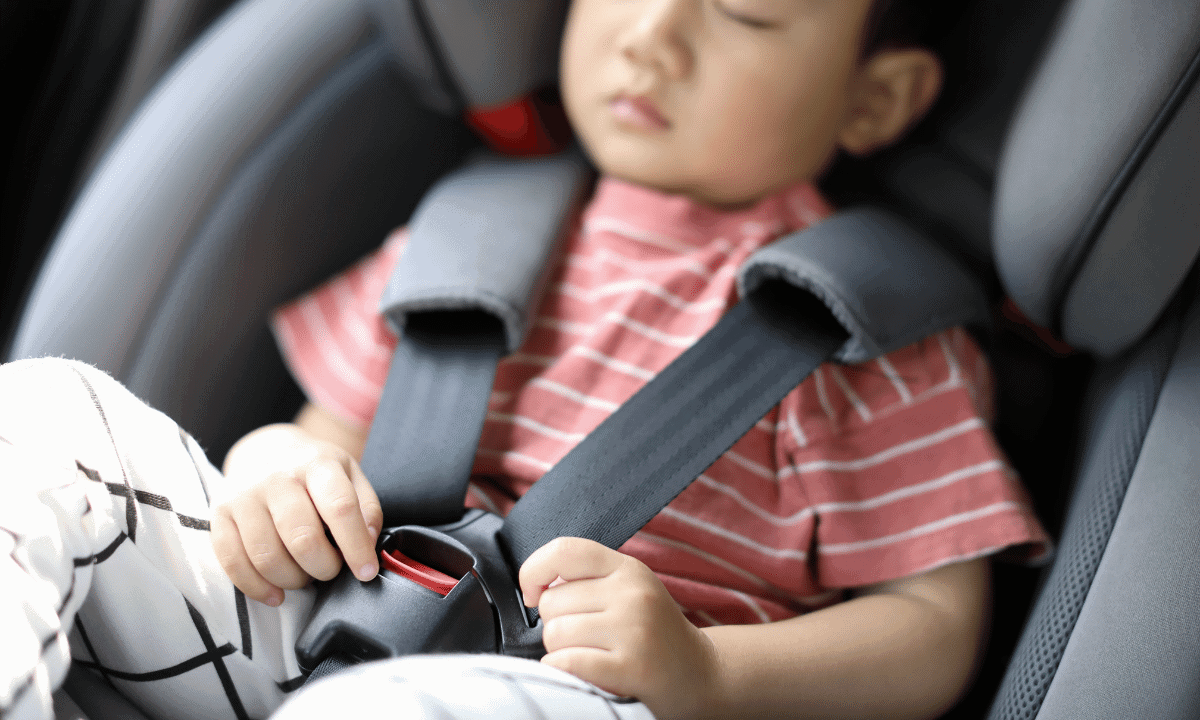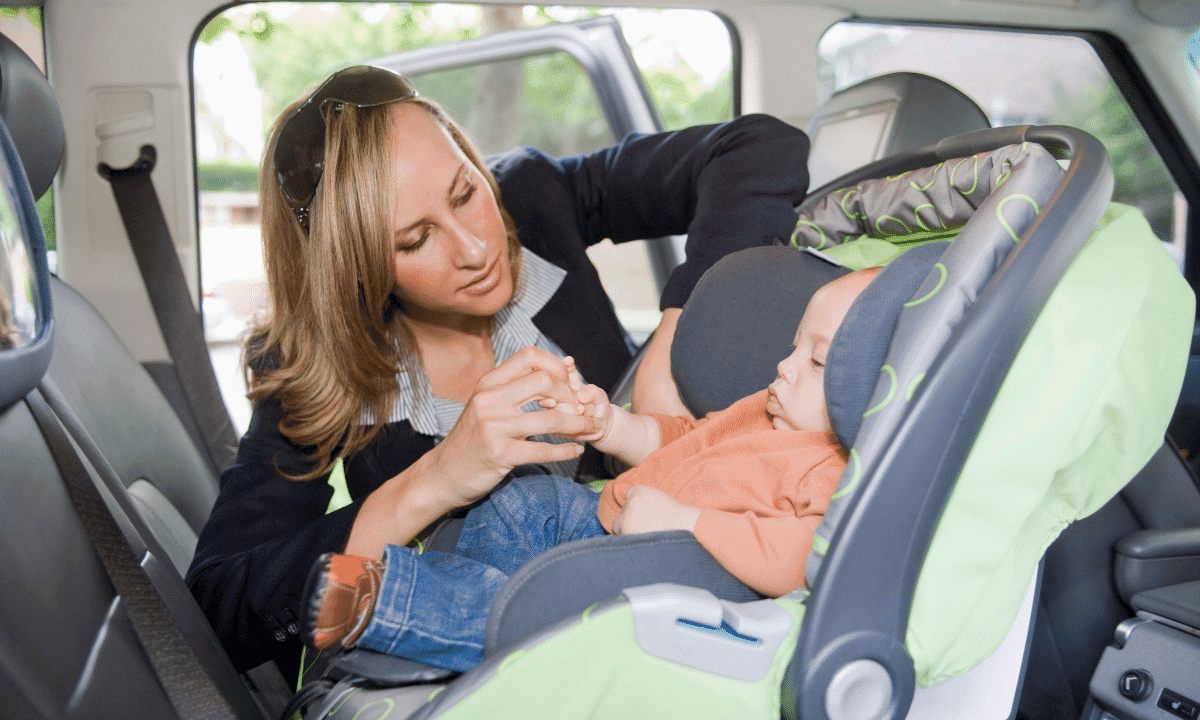Many parents wonder when they can transition their baby car seat to face forward in their vehicle.
According to the American Academy of Pediatrics, until your child has outgrown the car seat height and weight limits, they should remain in a rear-facing one. This will help them stay safer when traveling at high speeds or near traffic lights with other cars around.
Car seat safety is a top priority when your baby leaves the hospital. Infants should always remain rear-facing, but what about toddlers? Can you switch your child’s seat to forward-facing mode if they are too big or heavy for their initial position? The answer again depends on different factors like height and weight. Keep reading to learn more!

Table of Contents
Rear-Facing vs Forward-Facing Car Seats
Recent research has shown that it is not safe to turn a car seat around when your child reaches two years of age. Expert organizations used to say this was okay, but now they recommend against doing so as the weight difference between an infant and toddler can cause injury or even death in some cases.
Rear-facing car seats should always be used for newborns, and there are two kinds of car seats which include infant and convertible models.
The rear-facing infant car seat is a lightweight, portable and convenient option for parents who want their new bundle of joy with them everywhere they go. With handles on the outside and base functionality, it’s easy enough to take this car seat anywhere.
You may have difficulty finding an infant car seat that will fit your growing baby once they outgrow the car seat size limitations. Most rear-facing seats have weight limits between 28 and 35 pounds, with height restrictions ranging from 30″ -35″.
The next step is upgrading to convertible vehicles, which can be used beginning when you’re still using it as a rear agent, then switching over to front-facing when ready.
Convertible seats are heavy and bulky, but they can be a good option for parents who don’t want to buy another car seat. They’re safe with infant positioning systems that keep your little one’s head secured during bumpy rides in the back seat.
Convertible seats allow children to ride facing forward and backward until they are about 40 pounds, at which point it’s recommended that you stop using the rear-facing position. Once your child weighs 50 more lbs., turn them around, so their headrest faces towards you instead of away from you.
When Can A Baby Car Seat Face Forward?
The American Academy of Pediatrics strongly advises that all babies ride rear-viewing as long as they can until reaching their weight or height limit in a car seat. Convertible seats usually have an upper weight limit, but many still allow them to stay within this range up until two years old.
Car Seat Rules
- The rear-facing car seat is ideal for use with an infant up to 22 pounds and 26 inches tall. This protective equipment has a lower weight limit, so it’s not suitable after children grow out of their babyhood.
- When choosing a car seat, the most important thing to consider is your child’s weight. Rear-facing seats have higher weight limits, up to 40 or 50 pounds. You can convert them for use in forward-facing seats.
- The all-inclusive car seat is the perfect choice for parents looking to keep their kids safe and secure. This product can be used rear-facing up to 40 pounds, forward-facing at 20 lbs., or as a belt-positioning booster with an adult harness system.
In addition, a child outgrowing their rear-viewing only car seat does not necessitate switching to an even more advanced forward-viewing mode. Many convertibles on today’s market allow children as young as one year old and up to stay safely seated behind wheels with 40 pounds or more weight capacity.
Rear-facing is the best way to protect your child in a car, which means that two years old or younger and 4-year-olds should always ride safely facing backward. The rear-facing car seat is an excellent choice for young children because it’s designed to protect them from injury in sudden deceleration.
However, many parents will decide that their children can stay safely protected by moving them into age-appropriate forward-facing seats when they outgrow this position.
Note that it’s essential to base your car seat switch on the calendar rather than when your baby reaches their maximum height or weight limit for rear-facing car seats. For some kids, this doesn’t happen until around three years old.
If a child has grown enough for rear seat weight or height restrictions of your convertible seat, you should place the car seat at the forward-viewing core with straps as long as possible, up to the car seat manufacturer’s maximum weight or height. Every baby is unique. Consult with your doctor if you have any concerns about rear-facing or forward-facing car seats.
Safety Tips
- Remember when you are installing your car seat in a new position to tighten all of its anchors and straps. If you have an extra rope for forward-facing seats, do not hesitate to use it. Place the forward-facing seat in the middle of the rear seats, which is where you’re baby will be safest.
- Securing the rope is essential for forward-facing seats. The strap that attaches to an anchor in the back of your car will keep it secure and reduce how far a child’s head flies forward during collisions by up to eight inches.
Final Thoughts
The safest position for your baby’s car seat is still rear-facing, even when they reach the maximum height and weight requirements.
This reduces the risk of severe injuries like the spine or in your baby’s head/neck area. As any parent knows, ensuring that your children are secure while driving is a critical concern. And if you have questions about car seat safety or how to turn their seats forward at the appropriate time, don’t hesitate to talk with your pediatrician!

